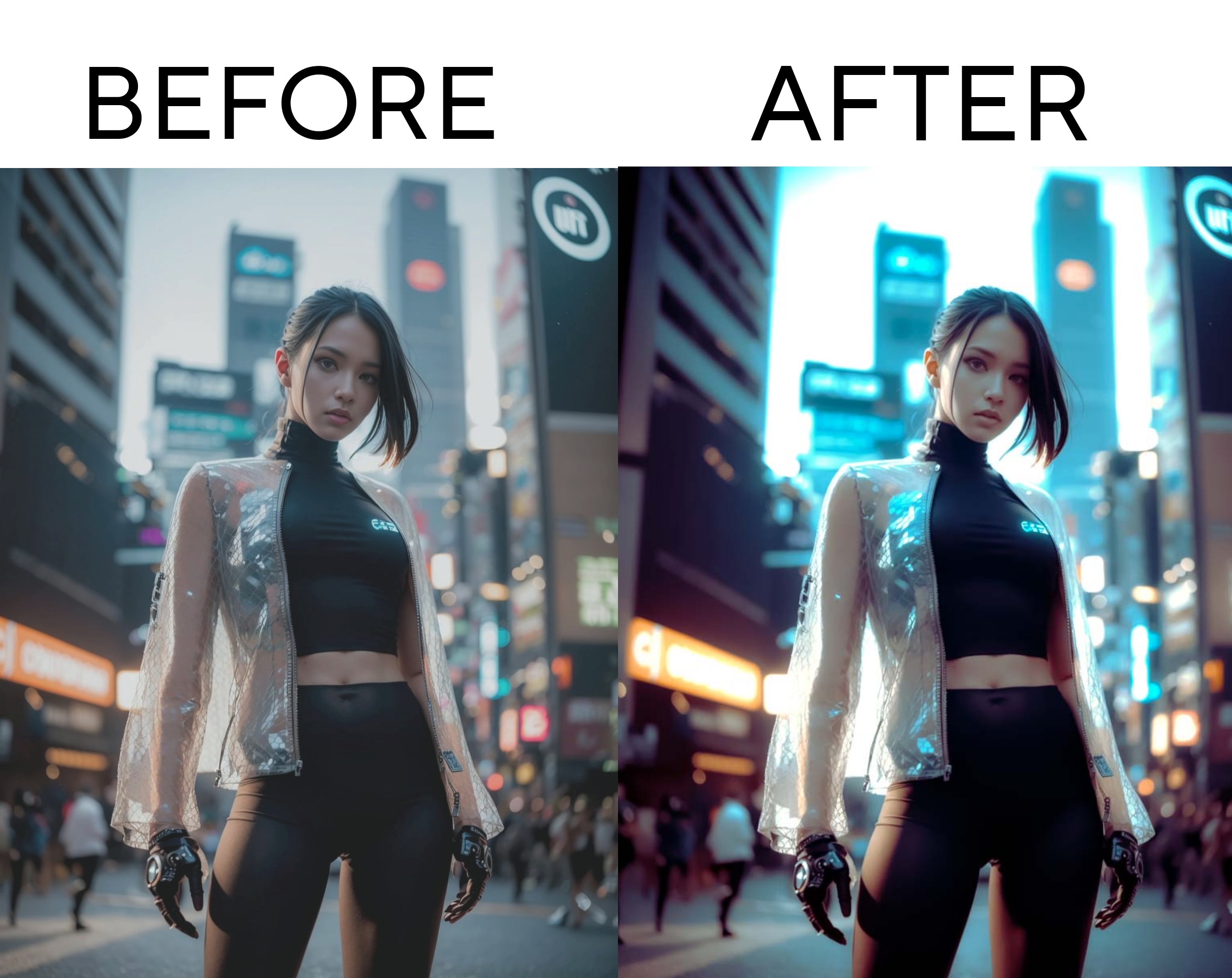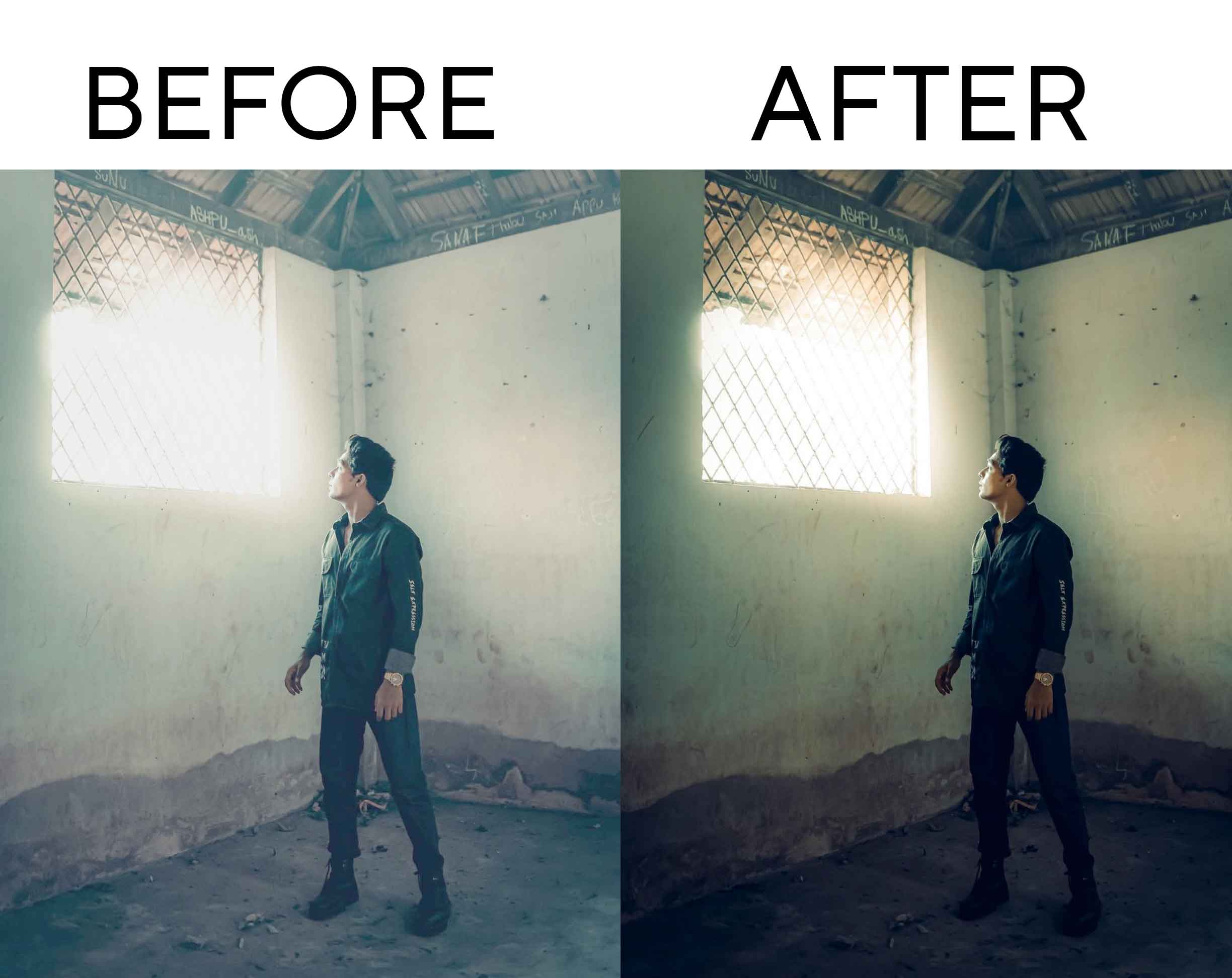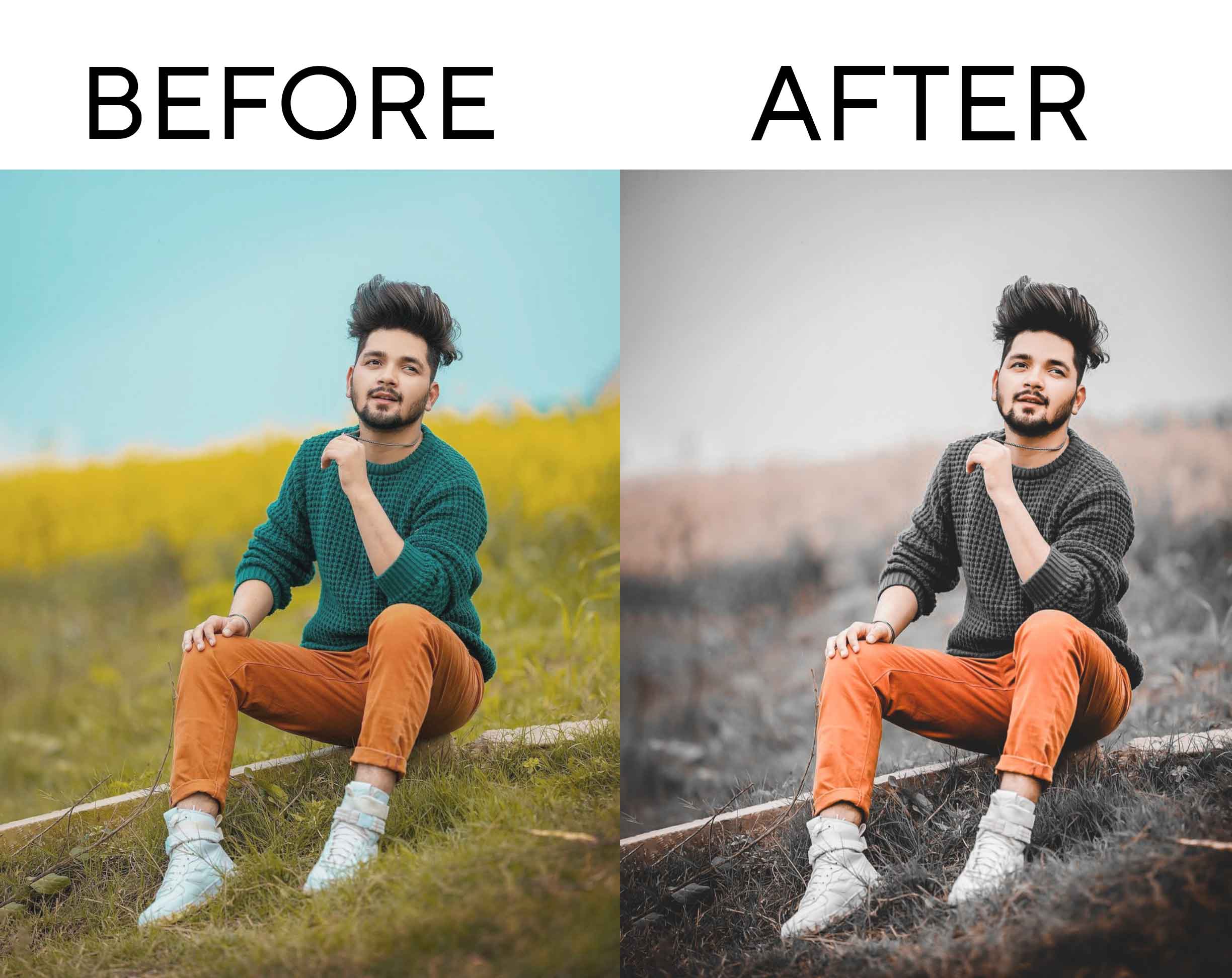
- Color correction: Adjusting the colors and tones in an image can greatly impact its overall appearance. Balancing white levels, saturation, contrast, and exposure can bring out the desired mood and improve visual appeal.
- Composition and cropping: The composition of a photograph plays a crucial role in its impact. Cropping or resizing the image to remove distractions, focus on the subject, or adhere to specific aspect ratios can improve the overall composition.
- Retouching and blemish removal: Eliminating imperfections, blemishes, or distractions can significantly enhance the quality of a photo. This includes removing dust spots, scratches, unwanted objects, or even retouching skin or other surfaces.
- Sharpening and clarity: Adjusting the sharpness and clarity of an image can bring out details and make it appear more crisp and well-defined. Careful application of sharpening techniques can help emphasize textures and improve overall image quality.
- Exposure adjustment: Correcting exposure issues such as overexposure or underexposure is crucial for a balanced and visually pleasing photo. Adjusting highlights, shadows, and mid-tones can help restore proper exposure and recover details in different areas.
- Noise reduction: Digital noise, often caused by shooting in low-light conditions or using high ISO settings, can degrade the quality of an image. Applying noise reduction techniques selectively can reduce graininess while preserving important details.
- Perspective correction: Adjusting the perspective of an image can correct distortions caused by lens characteristics or shooting angles. Straightening vertical or horizontal lines can create a more natural and balanced look.
- Special effects and creative adjustments: Depending on the desired outcome, photo editing may involve creative adjustments such as adding filters, applying artistic effects, manipulating colors, or using gradients to create unique looks and evoke specific emotions.
-
Workflow and non-destructive editing: Employing a non-destructive workflow allows for flexibility and experimentation without permanently altering the original image. Utilizing layers, adjustment masks, and saving edits in editable formats (e.g., RAW or PSD) ensures that changes can be easily reversed or modified later.
 DOWNLOAD 80+ PRESET
DOWNLOAD 80+ PRESET - Attention to detail: Paying attention to small details can make a significant difference in the final result. Checking for artifacts, aligning elements, ensuring consistent lighting, and performing meticulous edits contribute to a polished and professional-looking photograph.
- White balance adjustment: Correcting the white balance ensures accurate representation of colors in an image. Adjusting the temperature and tint can help eliminate unwanted color casts and make the image look more natural.
- Dodge and burn: Dodging involves selectively lightening certain areas of an image, while burning darkens specific areas. These techniques can be used to add depth, highlight or darken specific elements, and create a more three-dimensional effect.
- Lens correction: Correcting lens distortions, such as barrel or pincushion distortion, chromatic aberration, or vignetting, can improve the overall image quality and make it appear more balanced and visually pleasing.
- Cloning and healing: Cloning allows you to duplicate a specific area of the image and cover up unwanted elements or fill in gaps. Healing tools help remove imperfections like blemishes, wrinkles, or scars in a more seamless and natural way.
- Selective editing: Applying adjustments selectively to specific areas of an image can help emphasize or de-emphasize certain elements. Using tools like adjustment brushes or masks, you can control the impact of edits and create a more focused and impactful composition.
- Resizing and resolution: Adjusting the image size and resolution is crucial for different purposes, such as web use, printing, or specific display requirements. Resizing should be done while maintaining the image quality and ensuring proper sharpness.
- Workflow organization: Maintaining an organized workflow is essential, especially when dealing with multiple images or complex editing tasks. This includes using file naming conventions, organizing layers, using smart objects, and keeping track of different versions or variations of an image.
- Consistency and style: Establishing a consistent editing style or adhering to a specific aesthetic can help create a cohesive body of work or maintain a consistent look across multiple images. Consistency can be achieved through color grading, using specific presets, or following a defined editing process.
-
Feedback and iteration: Seeking feedback from others, whether it’s fellow photographers or clients, can provide valuable insights and perspectives. Iterating on your edits based on constructive criticism can help refine your skills and achieve the desired results.
 DOWNLOAD 40+ DARK PRESET
DOWNLOAD 40+ DARK PRESET - Personal artistic vision: Ultimately, photo editing is a creative process, and expressing your personal artistic vision is important. Don’t be afraid to experiment, explore different styles, and develop your own unique editing approach that reflects your creativity and style.
- Selective color adjustments: By targeting specific colors within an image, you can make adjustments to enhance or mute certain hues, create color contrasts, or even convert an image to black and white while retaining certain elements in color.
- Gradient adjustments: Utilizing gradient tools or adjustment layers can help create smooth transitions in exposure, color, or tone across different areas of an image. This can be particularly useful for balancing the sky and foreground in landscape photography or creating dramatic lighting effects.
- Texture enhancement: Adding or enhancing textures can give images a unique and artistic touch. You can experiment with overlays, textures, or blending modes to introduce additional visual interest and depth to your photographs.
- Creative filters and effects: Applying creative filters, such as vignettes, film grain, or lens flares, can evoke specific moods or add a vintage or cinematic look to your images. However, it’s important to use such effects judiciously to avoid overdoing them and detracting from the overall quality of the photo.
- Respecting image integrity: While photo editing allows for creative manipulation, it’s crucial to respect the integrity of the original image. Avoid excessive editing that may result in unrealistic or unnatural-looking photographs unless that is the intended artistic effect.
- Understanding file formats: Familiarize yourself with different file formats, such as JPEG, PNG, or TIFF, and their respective strengths and limitations. Choosing the appropriate file format for the intended use and understanding how compression affects image quality can ensure optimal results.
- Calibration and color management: Ensuring your monitor is properly calibrated and color-managed is essential to accurately perceive and edit colors in your images. Regularly calibrating your monitor and working in a color-managed environment can help achieve consistent and accurate color reproduction.
- Preservation of image details: It’s important to strike a balance between enhancing an image and maintaining its natural look. Avoid excessive retouching or manipulation that may result in loss of important details or make the image appear unrealistic.
- Understanding output requirements: Consider the intended output of your edited image. Whether it’s for web display, social media, or printing, understanding the specific requirements in terms of resolution, color space, and file size can ensure optimal results.
- Learning and staying updated: The field of photo editing is constantly evolving, with new techniques, tools, and software being introduced. Continually investing time in learning and staying updated with the latest trends and technologies can help you improve your skills and achieve better results in your edits.



